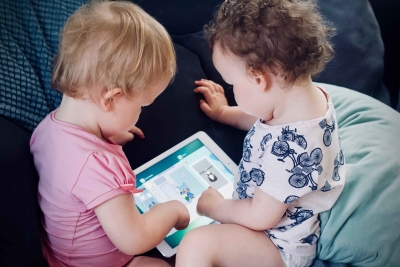
Mindfulness and your Child’s Mental Health
Encouraging Mindfulness for Healthy Minds
We all want our children to be happy and healthy. We make sure that they eat right, get enough exercise, and go to sleep at the right time. One thing often overlooked, however, is encouraging proper emotional development. One great way to help your child become a healthy, emotionally stable human being is by fostering their ability to be present.
For those not completely familiar with the challenging task of ‘being present,’ it involves emotionally detaching oneself from the worry of the unchangeable past and the unpredictable future. Being present involves taking moments throughout the day to practice mindfulness and perform tasks that require a whole body-mind state of awareness.
Mindfulness and mental development
Being present can be described as being in a state of mindfulness. To further define the term ‘mindfulness’, it involves focusing our attention completely on the task at hand, be it drinking a warm cup of tea or putting Legos together. What’s important is to make observations such as the scent, warmth, and taste of the tea. When playing with Legos, really focus in on the feeling of two bricks snapping together. The goal, put simply, is to remove overpowering emotions from the mind.
When we’re children, mindfulness comes naturally to us. There’s usually very little to worry about. Aside from whatever they’re doing at any given moment, children have the unique ability to be completely absorbed with what they are doing. As they get older, responsibilities, worries, and distractions pile on. They forget how to tune everything out and only focus on the present.
Considering this, it’s not that we’re teaching a child to be present, it’s more than we’re encouraging them to practice what already comes naturally to them. Children who practice mindfulness are generally less stressed and anxious, are better at completing tasks, are more compassionate, and more mature.[1]
Research indicates that mindfulness can benefit attention, instill the ability to calm down when upset, and improve decision making.[2] In short, the benefits of mindfulness in children include emotional regulation, cognitive focus, and improved mental development.
How do you get a child to practice mindfulness? One of the best ways to get children into a state of mindfulness is through meditation or other mentally engaging activities. We’re not necessarily advocating for the lotus position, “Om” chanting kind of meditation that comes to mind – we know how hard it can be to get your child to sit still for more than 20 seconds.
We’re recommending that you encourage your child (if they’re an appropriate age) to take some time during the day to pay attention to their thoughts, what they feel, and what they hear. Have them focus in on what’s happening around them.
The goal is to allow your child to ‘tune in’ to the present moment instead of ‘tuning out’ from experience. This could happen during a walk, while drawing, or playing with clay. The goal of these activities is to break up the rush of everyday life and open their minds to think curiously.
A toddle bending down for a stick in the woods
Some examples of mindful activities:
Take a walk with your child and ask them to make observations. Ask questions such as: how many birds can they hear? Can they tell what direction the wind is blowing? How many planes can they see? The point of this exercise is to engage their observational skills and to get them to notice things they would normally overlook.
Drawing is mentally stimulating, and it helps with a child’s dexterity. Asking them to draw from their imagination usually results in numerous Princess or Spiderman drawings. Asking them to draw a bowl of fruits on a table or a sleeping dog will not only engage their observational skills but it’s usually pretty entertaining for us as well.
Play music and have them identify the kinds of sounds they hear. Ask them how the music makes them feel, whether they think it’s happy or sad. Have them dance to it. Dancing is a great way for them to express themselves through motion.
The I Spy Treasure Hunt books are a great way to hone your child’s perception. The books combine language and visuals, asking children to find different items hidden in chaotic and funny photographs. Studies suggest the use of both language and visuals is great for developing minds. By asking your child to locate things vocally, the combination of language and visuals taps into a child’s cognitive system, enhancing their ability to learn and navigate cluttered environments. [3]
Technology is distracting us
What role does technology play in all of this? There’s a time and place for interacting with technology, but it’s hard for children to step back and observe the world in the presence of smartphones, or other types of screens. When distracted by notifications, sending pictures, and playing games they lose their ability to be present.
Their minds become preoccupied with video games, sending pictures through Snapchat, or watching another trickshot YouTube video. It doesn’t help that social media, video sharing websites, and video games are specifically designed to keep users absorbed by consuming content, but we talk about that in another post.
We know how much easier it is to hand a phone over to a child when you need some quiet time. Instead, try getting them to create art or look through a picture book. The goal during mindfulness activities is to get them away from their smartphone or any other screen. This allows time for reflection. It gives them time to work out anything that may have bothered them throughout their day, things they didn’t get a chance to address.
…
While at it, pick up a pencil and draw with them, or teach them by example and read a book yourself. It’s beneficial for your child’s mental development, but it’s also great for us adults to do the same.
Activities, like reading books and drawing together, are not only great for bonding but refreshing. Although it may feel like you don’t have time for such simple tasks, stepping away from it all not only helps us recover, it also energizes our minds.
Where to go from here
The purpose of this growing collection of articles is to examine the benefits and the dangers of the internet, as well as the effects it may have on your child’s mind and their daily life. Consult these articles for advice on how to help your child stay safe and healthy in a digital world.
Is there anything you’d like to add, have we missed anything? If you’re interested in sharing your experiences with us or writing a guest post for us, send us an email via hello@mudita.com!
Please feel free to get in touch via social media (send us some photos or videos too), you can find us on Facebook, Twitter and Instagram, let’s connect! To learn more about Mudita, take a look at our website and our other posts.
If you enjoyed reading this article, please share and recommend it!
Related stories

Expert Tips for Adjusting to a School Sleep Routine
Ease your child into the back-to-school routine with expert tips on adjusting sleep schedules, reducing screen time, and creating a calming bedtime atmosphere.

How Screen Time Could Harm Your Preschooler's Development
Discover what modern technology means for the future of our children. Explore the impact of mobile devices on preschoolers' development in this revealing study

Is it safe to give your child a smartphone?
Even though it's a small device, a smartphone holds the power to shape the world and influence the mind of your child.
If you'd like to receive the best stories from our blog, keep up to date with our progress and get notified about our product releases and special discounts.